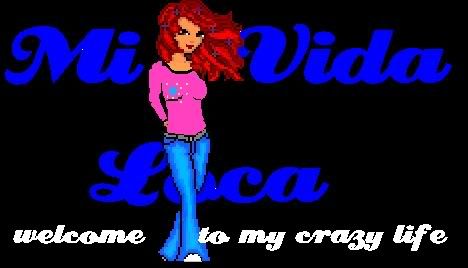Trip to the Oklahoma City National Memorial
(I guess it's Thursday now)
I went with Jeff and the band to the Oklahoma City National Memorial yesterday afternoon. We loaded up two school buses in the back parking lot and made the 20 minute trip into town. We got off the buses and gathered under the "Survivors Tree", an approximately 80 year old American Elm which withstood the blast from the truck bomb that blew up the Murrah Building on April 19, 1995. It caught on fire from the burning cars in what was once the parking lot and allowed to burn itself out. Everyone thought it was dead and made plans to cut it down, but the following spring, it leafed out, and it became a symbol of resiliancy. It is this tree that is shown on the logo of the Memorial (see below).
A ranger from the National Park Service gave us a brief, yet detailed, history of the site, the symbolism of the Gates of Time (the eastern gate signifies the moment before the blast, 9:01am; the western gate signifies the moment after the blast, 9:03am), the reflecting pool, which is between the two gates, symbolizes the moment of the blast, 9:02am. It is also a replacement for the street that ran in front of the building.
Beyond the reflecting pool is the Field of Chairs, arranged by where each of the victims were in the 9 story building. They are made of bronze and stone and inscribed with the name of each of the dead. There are two sizes of chairs, large ones for the adults, and 19 small chairs for the children who died.
We then recieved tickets for the museum exhibits, which were stickers, and small groups of us were sent in at a time. Once you are in the exhibition area, it is 6am on April 19, 1995. It began as an ordinary spring day. People were going about their business, getting ready for work, and school. There were plaques on the walls detailing what was happening during a given time frame.
There was no inkling as to what that day would become.
Once you are in the 9am area, you walk into a room where you hear an audio recording of a meeting of the Water Commission. The blast, and the ensuing chaos that followed, could be heard on the tape. A wall lights up with the pictures of the 168 people who died that day.
You exit that room, and walk into a corridor where a newscast is being played, showing the initial damage, and comments from the news people covering the story that day. Then there is an area where videos of survivors are played recalling their feelings, their fears, whether people they knew made it out. Rescue workers recall how they felt while searching for victims, and how rescue workers from many states came to Oklahoma City just to help.
The exhibit of the items found in the rubble was the first place I felt myself get emotional. Personal items such as briefcases, jewelry, clothing, a child's shoe, a bible were all on display. The damage was extensive and devastating.
The exhibit continues down a flight of stairs, and you are in a room where the photos and names of the dead are displayed. It continues into a timeline of the search for more victims, the mind-numbing days that followed, the memorial services, visits by President and Mrs Clinton, Al Gore, and then-Governor Frank Keating and his wife, Cathy. The efforts to rebuild, the fundraising efforts, the competition for a design of the Memorial site, the destruction of the remains of the Murrah Building, and the placement of the chainlink fence that so many people left gifts, messages, mementos, and simple gestures by ordinary folks touch by this tragedy. A section of this fence is part of the Memorial grounds, and people still come by and place things on it. The Park Service estimates that over 60,000 items have been removed from the fence over the years.
At the end of the exhibit, there is a guestbook to sign. There are also markers so that one can sign a wall if they chose to.
Our group met outside near the children's area, a place where there are tiles made by children from all over the USA and sent to Oklahoma City as expressions of hope and sorrow. On the ground, there are three chalkboards where children (and some adults) can write messages, draw pictures, and play with chalk provided by the Memorial staff.
Many in our group wanted to leave something on the fence, so several people (including me and Jeff) left our tickets with our names on them on the fenceposts (since they were adhesive).
The tour is a very interesting, educational, and emotional experience. I will definitely go back sometime. If you are in the Oklahoma City area, either as a resident or visiting on a trip, it's definitely worth seeing. The outdoor area is free and open 24 hours. The inside museum is open Monday-Saturday from 9am to 6pm, and on Sundays 1-6pm. There is an admission charged, but it's pretty reasonable.
"May God Bless Us All"
I went with Jeff and the band to the Oklahoma City National Memorial yesterday afternoon. We loaded up two school buses in the back parking lot and made the 20 minute trip into town. We got off the buses and gathered under the "Survivors Tree", an approximately 80 year old American Elm which withstood the blast from the truck bomb that blew up the Murrah Building on April 19, 1995. It caught on fire from the burning cars in what was once the parking lot and allowed to burn itself out. Everyone thought it was dead and made plans to cut it down, but the following spring, it leafed out, and it became a symbol of resiliancy. It is this tree that is shown on the logo of the Memorial (see below).
A ranger from the National Park Service gave us a brief, yet detailed, history of the site, the symbolism of the Gates of Time (the eastern gate signifies the moment before the blast, 9:01am; the western gate signifies the moment after the blast, 9:03am), the reflecting pool, which is between the two gates, symbolizes the moment of the blast, 9:02am. It is also a replacement for the street that ran in front of the building.
Beyond the reflecting pool is the Field of Chairs, arranged by where each of the victims were in the 9 story building. They are made of bronze and stone and inscribed with the name of each of the dead. There are two sizes of chairs, large ones for the adults, and 19 small chairs for the children who died.
We then recieved tickets for the museum exhibits, which were stickers, and small groups of us were sent in at a time. Once you are in the exhibition area, it is 6am on April 19, 1995. It began as an ordinary spring day. People were going about their business, getting ready for work, and school. There were plaques on the walls detailing what was happening during a given time frame.
There was no inkling as to what that day would become.
Once you are in the 9am area, you walk into a room where you hear an audio recording of a meeting of the Water Commission. The blast, and the ensuing chaos that followed, could be heard on the tape. A wall lights up with the pictures of the 168 people who died that day.
You exit that room, and walk into a corridor where a newscast is being played, showing the initial damage, and comments from the news people covering the story that day. Then there is an area where videos of survivors are played recalling their feelings, their fears, whether people they knew made it out. Rescue workers recall how they felt while searching for victims, and how rescue workers from many states came to Oklahoma City just to help.
The exhibit of the items found in the rubble was the first place I felt myself get emotional. Personal items such as briefcases, jewelry, clothing, a child's shoe, a bible were all on display. The damage was extensive and devastating.
The exhibit continues down a flight of stairs, and you are in a room where the photos and names of the dead are displayed. It continues into a timeline of the search for more victims, the mind-numbing days that followed, the memorial services, visits by President and Mrs Clinton, Al Gore, and then-Governor Frank Keating and his wife, Cathy. The efforts to rebuild, the fundraising efforts, the competition for a design of the Memorial site, the destruction of the remains of the Murrah Building, and the placement of the chainlink fence that so many people left gifts, messages, mementos, and simple gestures by ordinary folks touch by this tragedy. A section of this fence is part of the Memorial grounds, and people still come by and place things on it. The Park Service estimates that over 60,000 items have been removed from the fence over the years.
At the end of the exhibit, there is a guestbook to sign. There are also markers so that one can sign a wall if they chose to.
Our group met outside near the children's area, a place where there are tiles made by children from all over the USA and sent to Oklahoma City as expressions of hope and sorrow. On the ground, there are three chalkboards where children (and some adults) can write messages, draw pictures, and play with chalk provided by the Memorial staff.
Many in our group wanted to leave something on the fence, so several people (including me and Jeff) left our tickets with our names on them on the fenceposts (since they were adhesive).
The tour is a very interesting, educational, and emotional experience. I will definitely go back sometime. If you are in the Oklahoma City area, either as a resident or visiting on a trip, it's definitely worth seeing. The outdoor area is free and open 24 hours. The inside museum is open Monday-Saturday from 9am to 6pm, and on Sundays 1-6pm. There is an admission charged, but it's pretty reasonable.
"May God Bless Us All"





























<< Home